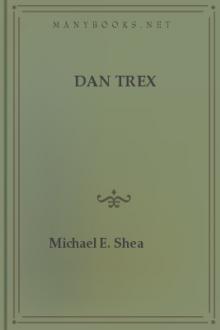How to Be a Mentsh (and Not a Shmuck), Wex, Michael [top inspirational books .txt] 📗

Book online «How to Be a Mentsh (and Not a Shmuck), Wex, Michael [top inspirational books .txt] 📗». Author Wex, Michael
Angry as Bar Kamtso is, it is almost inevitable that he decides to act like a shmuck in return. Getting back at the discourteous host—treating a shmuck like a shmuck—isn’t enough for him, though. If Bar Kamtso had expected (or received) different treatment, he and the host might not have been enemies in the first place. Bar Kamtso is after the rabbinic establishment that allows shmek like the host to corrupt it for their own ends. If we follow the Midrash, we can also say that he knew that Zechariah ben Avkilos would end up making the decision about the sacrifice. Bar Kamtso knew exactly where his vengeance was going to lead.
It isn’t that he had no reason to be angry. As Maimonides puts it:
One should be neither as easily angered as a choleric person nor as impervious to anger as a corpse, but should occupy a middle ground. One should get angry only about something that is worth getting angry about, in order to keep such a thing from happening again.
(MISHNEH TORAH,Laws of Conduct 1:4)
Anyone who has grown up in a traditional Jewish home knows how much is worth getting angry about if you’re a parent, but Maimonides counsels temperance; there are few things that a hissy fit will keep from recurring. The traditional attitude toward anger is that it is a shmuckifying agent par excellence, capable of turning an otherwise intelligent person into an utter idiot: “He who grows angry forgets what he already knows and increases stupidity” (Nedorim 22b); “Anger puts an end to wisdom” (Pesikta Zutrosi, Va-Eyro); and, most tellingly in this case, “Because he was swayed by anger, he was swayed by error” (Sifre, Matos 5). By going after the rabbis, Bar Kamtso is simply repeating the party-thrower’s mistake of placing the blame where it doesn’t really belong. This doesn’t let the rabbis off the hook for their indifference, but they’re still not the people who threw him out. Bar Kamtso’s anger has turned him into the image of everything he hates.
There is a well-known Talmudic axiom that holds that “a person’s character is revealed in three things: his cups, his pocket, and his anger” (Eruvin 65b; in Ashkenazic Hebrew, these three things come out as be-koyseh, u-bekiseh, u-bekaseh, which has a much better beat). You can tell who someone is by how he behaves when he drinks, how provident and honest he is in financial matters, and how he acts when angry. Assuming that Bar Kamtso had had time for a first-century cocktail or two before being confronted by his host, he acquits himself admirably on the first two scores: he acts politely, makes a reasonable case for staying, and offers generous compensation for being allowed to do so. But it all goes for naught once he gets angry, and there is nothing that takes a person from mentsh to shmuck as quickly and as irrevocably as anger.
Since the rabbis at the party, the scholars who are supposed to embody all that is best in the culture, did not come to his defense or object to his ill-treatment, Bar Kamtso decides to take his revenge on the system that makes the rabbis so important:
He went to the emperor and said, “The Jews have rebelled against you.”
“Says who?” asked the emperor.
“Send them a sacrifice and see if they offer it.”
He sent a choice calf with Bar Kamtso, who made a blemish in its upper lip…a place where we consider it a blemish but they [the gentiles] do not.
(GITIN 56A)
If he, Bar Kamtso, was thrown out of a house on a specious pretext, he was going to make sure that the same thing happened to the rabbis. The Hebrew name of the Temple is bais ha-mikdosh, literally, “house of the holy place.” Since the days when it was still functioning, it has been known colloquially as ha-bayis, “The House,” or bayis sheyni, “The Second House,” to distinguish it from the Temple built by Solomon and destroyed in 586 B.C.E. Bar Kamtso took a legitimate grievance and made it into a rather unfunny joke. Where Bar Kamtso got kicked out of a house, he was going to make sure that those who allowed it to happen would be kicked out of the house.
Continual upping of the ante in the name of a spurious quid pro quo or measure for measure has been a leading shmuckish characteristic for as long as there have been shmucks to overreact. Bar Kamtso, the nobody, the grasshopper’s little boy, made sure that no one would ever forget the wrong that he had suffered. If the rabbis raised no protest when an injustice was committed against him, he’d give them an injustice that would open their mouths at last; one way or another, they were going to be screaming. And that’s where Zechariah ben Avkilos comes in.
III
WE NEED TO look at one more aspect of the story of Bar Kamtso and the party before we go on to talk about the things that a mentsh is supposed to do. Shmuckish behavior is usually pretty easy to identify, as long as someone else is engaging in it. Any shmuck can get up tomorrow, feeling bad, and say, “I shouldn’t have done that; I said the wrong thing; I should have spoken up,” and go on with her life. A person who understands mentshhood will call the aggrieved or offended party and apologize; they will have done the mentshly thing and made up, insofar as possible, for having acted like a shmuck. The nature of what they did and the





Comments (0)